How to Use Knee Wraps: In-Depth Guide
Author:
Unlock your full potential by engaging with our experts and community! Have questions about your fitness journey or looking for expert advice on weightlifting techniques? Don’t hesitate — leave a comment below and Oleksiy Torokhtiy will provide a personalized answer and insights to help you reach your goals.
Torokhtiy is reader-supported. Some links are affiliate links, and we may earn a commission at no extra cost to you. See our disclosure page for details.
Learning how to put on knee wraps is important to help provide protection and create stability to your knee joint. It is also important to understand how tight the wrap should be because if it’s too tight or too loose, it can have a negative effect on your overall performance.
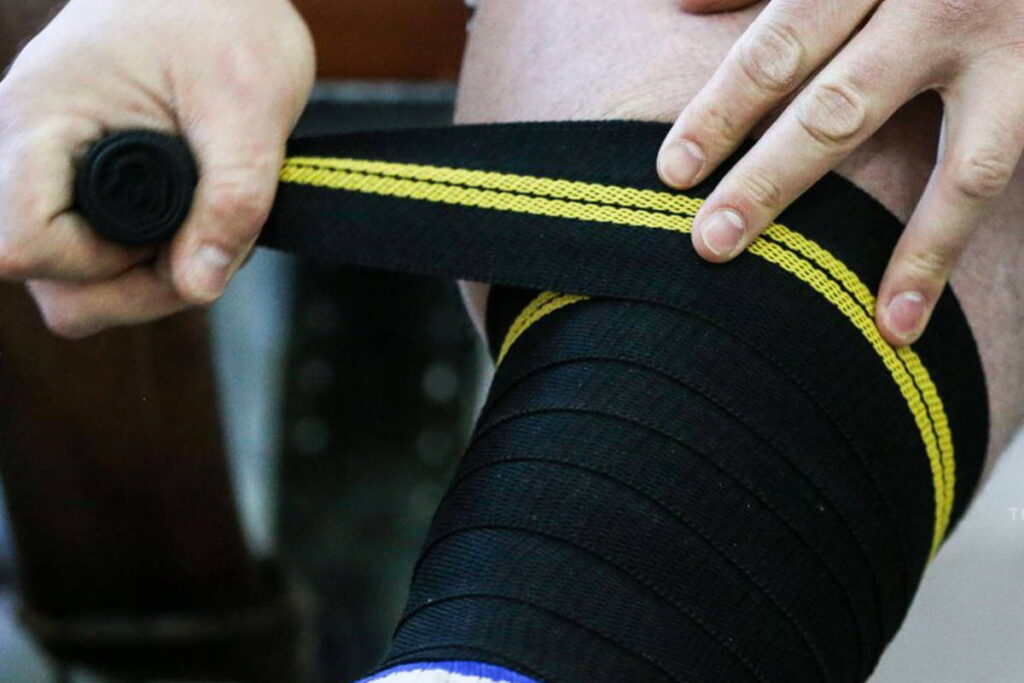
How To Put On Knee Wraps
Step 1:
Before you begin wrapping, make sure the wrap is tight. You don’t want to let the wrap become loose as it will take away from the knee wrap benefits.
Step 2:
Start with your leg extended out in a straight position. You can either start from the front or behind the knee. You typically want to place the end of the wrap just below the kneecap and above the shin.
Step 3:
Next, you want to imagine making an ‘X’ shape with the wrap as you wrap it behind the knee and back to the front.
Step 4:
Maintain continual tension as you spiral the wrap upward, covering the knee.
Step 5:
Afterward, you want to recreate the ‘X’ shape pattern, which enforces stability by bringing the wrap back to the bottom of your knee and wrapping it behind, before bringing it back up to the top of the kneecap.
Step 6:
Here, you should either be almost out of the wrap, or you’ll have a little bit left. If you’re out, then simply tuck the end into the wrap and call it a day, but if you still have some left, then continue with the spiral as before until you run out of the wrap and can tuck it in.
Different Knee Wrapping Techniques
The Spiral Method
The method described above is known as The Spiral Method. It’s typically the easiest method of knee wrapping as you follow the spiral pattern up the knee. This method is also easier for tightening the wrap, as the knee wrap tightens horizontally, which is according to the spiral pattern.
Adding the ‘X’ pattern to it creates more stability in the knee as it helps compress the knee, keeping it safer during the lift as well. Plus, it’s very simple to remove afterward as all you have to do is untuck the end of the wrap and it will fold backward, releasing tension on your knee after your lift.
The Triple ‘X’ Method
This method involves three ‘X’ patterns, each one placed slightly higher than the previous one, so it can cover the entire knee. You start off as you did with all other wrapping methods, just below the kneecap, and create the pattern as you move up the knee. Make sure you keep the tension by pulling the wrapper tighter with each layer of the ‘X’.
The Bowtie Method
Unlike the previous wrapping methods, the bowtie starts at the top of your knee, near the bottom of your quad. You leave the edge of the wrap out, and then cross down, behind the knee, to the bottom of the kneecap, and start to spiral back up to the top again. If you have extra wrap, you can make the ‘X’ pattern, and then spiral the rest to the top. Once at the top, you tie the extra edge you left out at the beginning with the extra left at the end to create a bowtie knot.
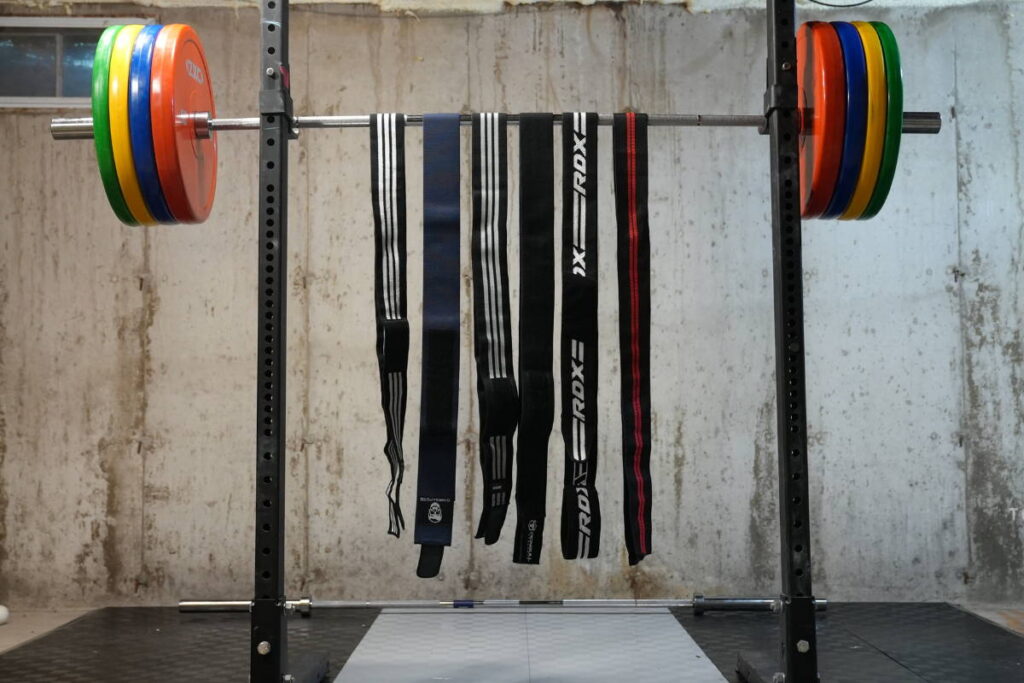
Two Common Knee Wrapping Mistakes
1. A common mistake will be that a lifter will remember to pull the wrap tight in their first or second spiral, but fail to keep tightening the wrap as they move through the entire process. This results in a failure to maintain tension, which negates the benefits of the wrap.
2. Having too much tension is another mistake. Some lifters can wrap their knees so tightly that it cuts off circulation. That is bad in of itself, but another negative of such a mistake is that it messes up the lifting form of the athlete, resulting in them missing their big lift as they cannot get into a proper technical position.
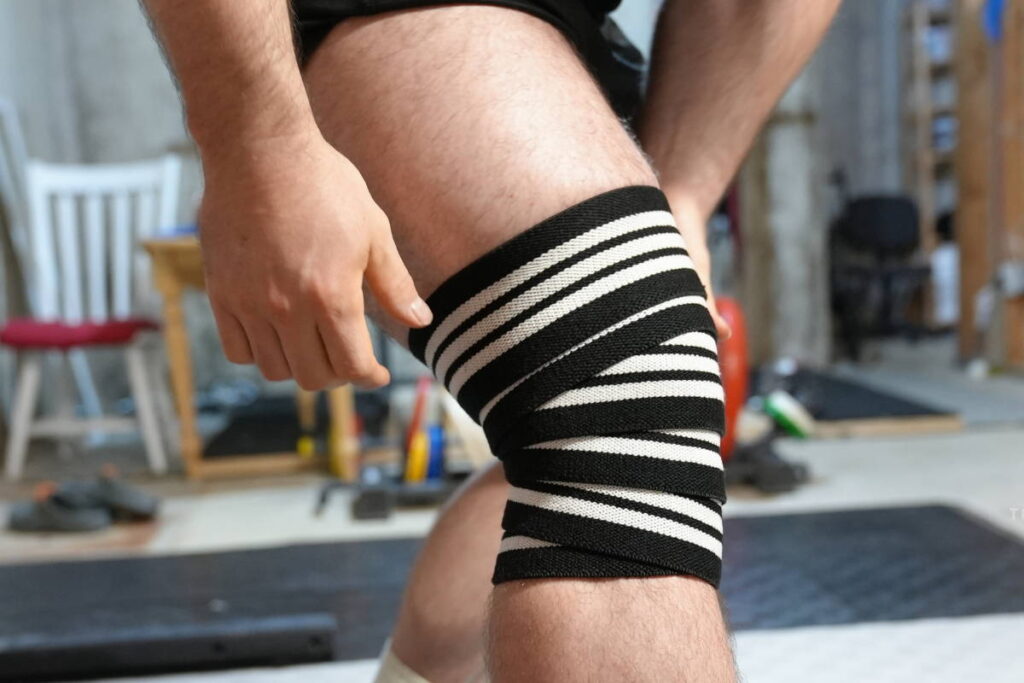
What To Look For In Knee Wraps For Deadlifting
A standard knee wrap comes in between 72 and 82 inches and is generally 3 inches in width. Typically, you want to look for a knee wrap that is between 78 and 80 inches as it suits both beginners and advanced lifters. This range will allow you to do most of the knee wrap methods.
Also, it’s better if the knee wrap is made of elastic nylon, as that material is more durable and will last longer.
For deadlifting, make sure the knee wrap isn’t tied too tightly as it could cause you to compromise your technique, especially as you sit down into your deadlift.
Our Recommended Pair Of Knee Wraps For Lifting
For knee wraps, we like the Harbinger Red Line 78-Inch Knee Wraps for Weightlifting.
- The wrap has 3inch wide elastic, which is suitable for competitions and helps provide a nice tight, and secure wrap around the knee for stable lifts.
- Also, it is 78 inches in length, so you can spiral it around your knee a few extra times to provide more stability in the knee. Plus, the length is plenty to allow you to practice different wrapping methods.
- It is a one size fits all wrap, so whether you’re a male or female, the wrap’s tension can be adjusted to fit your needs.
FAQ
When Should You Use Knee Wraps?
The best time to use your knee wraps is when you’re tackling weights close to your max. The wrap will help you lift the weight, but will also protect your tendons as it allows you to perform the weight quickly, so there is less tension on your tendons.
Don’t overuse the wrap for lesser loads because then your tendons and muscle will get weaker and this will result in injuries.
How Tight Should Knee Wraps Be?
If you imagine a tightness scale from 1 to 10, you want to eventually get to where the wrap is near an 8 or 9 on that scale when you’re performing the lift.
If the wrap is too tight, it can throw off your lifting technique and cause you to miss your lift. So, in the base form, your wrap should be tight enough for you to maintain your form.
Should I Squat With Knee Wraps?
If you’re handling somewhere above 80-85% of your 1 rep max, then it’s a good idea to throw on a wrap.
Learning how to wrap knees for squats is important because as you squat down, energy builds up in the wrap due to the tension you maintain as you wrap it around your knee. So, when you squat back up, the energy releases, helping you in the eccentric portion of the lift.
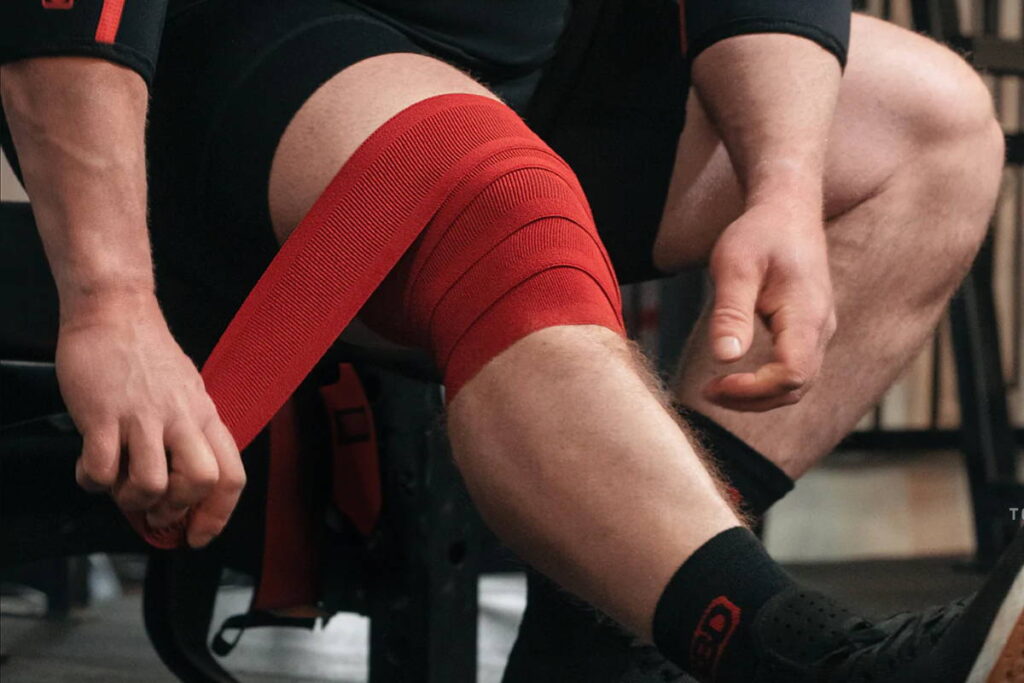
Conclusion
A knee wrap will help reduce the risk of injury and aid you in your lift, but only if you learn to apply the wrap with proper technique and tightness, so it doesn’t interfere with your form, but rather gives your lift a boost.
Also read:
- 5mm vs 7mm Knee Sleeves
- Knee Sleeves for Deadlift
- Knee Wraps vs Sleeves
- Best Knee Wraps For Squats
- How To Choose A Knee Brace
References:
- That’s A Wrap: How To Wrap Your Knees // Bodybuilding:
https://www.bodybuilding.com/fun/gary3.htm - What All Squatters Knee’d To Know // Bodybuilding.com:
https://www.bodybuilding.com/content/what-all-squatters-knee-d-to-know.html
Why Trust Us?
With over 20 years in Olympic weightlifting, strength training, nutrition coaching, and general fitness our team does its best to provide the audience with ultimate support and meet the needs and requirements of advanced athletes and professional lifters, as well as people who strive to open new opportunities and develop their physical capabilities with us.
By trusting the recommendations of our certified experts in coaching, nutrition, and sports training programming, as well as scientific consultants, and physiotherapists, we provide you with thorough, well-considered, and scientifically proven content. All the information given in the articles concerning workout programming, separate exercises, and athletic performance, in general, is based on verified data.
The product testing process is described in more detail here.
Author: Oleksiy Torokhtiy
Olympic Weightlifting Champion, PhD in Sport Science
Best Results: Snatch – 200 kg,
C&J – 240 kg
Oleksiy Torokhtiy is a professional athlete boasting 20 years of experience in Olympic weightlifting. With multiple European and World titles under his belt, he has showcased his prowess in two Olympic Games (Beijing 2008 and London 2012). Upon concluding his illustrious career, Oleksiy dedicated himself to coaching. By 2022, he had conducted over 200 weightlifting seminars worldwide. He is the visionary behind an international sportswear and accessories brand known for its motto, “Warm Body Cold Mind.” Additionally, he is an esteemed author and the creator of a series of training programs and eBooks.



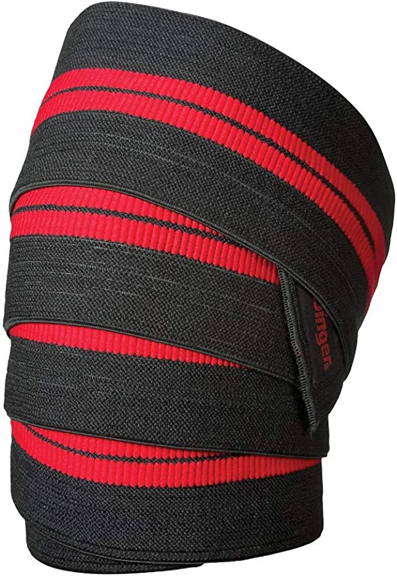
Still have questions after reading our article? Unlock your full potential by engaging with our experts and community! Don’t hesitate — leave a comment below and Oleksiy Torokhtiy will provide a personalized answer and insights to help you reach your goals.